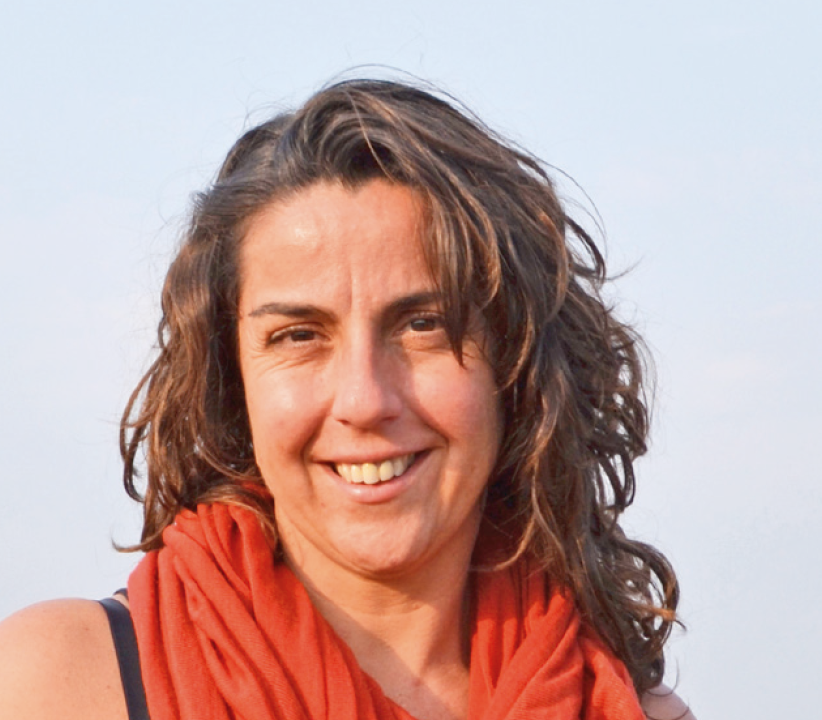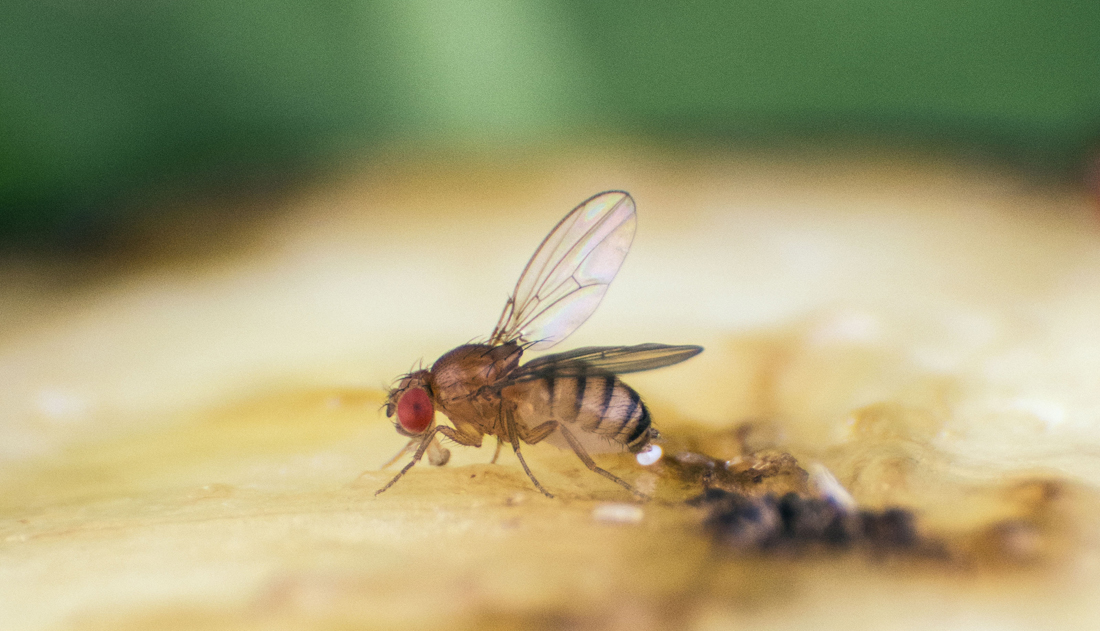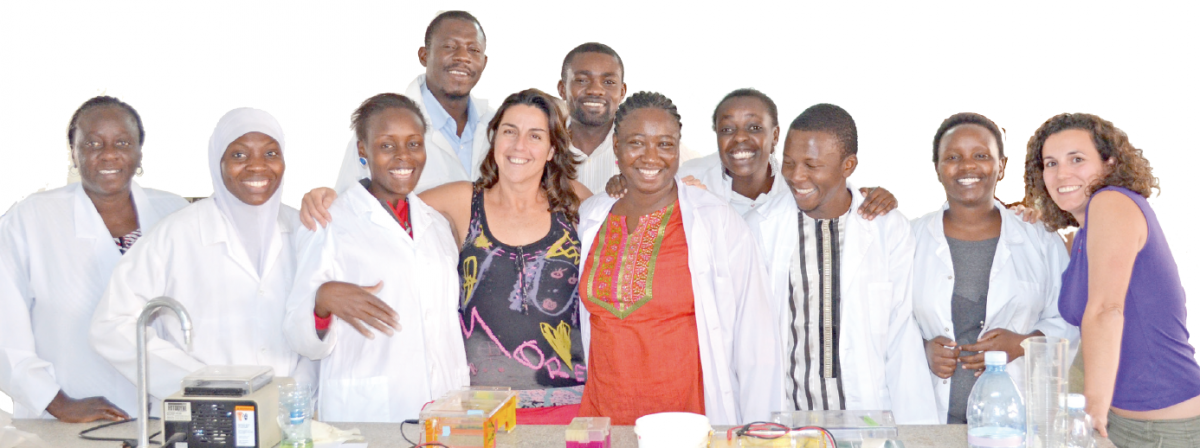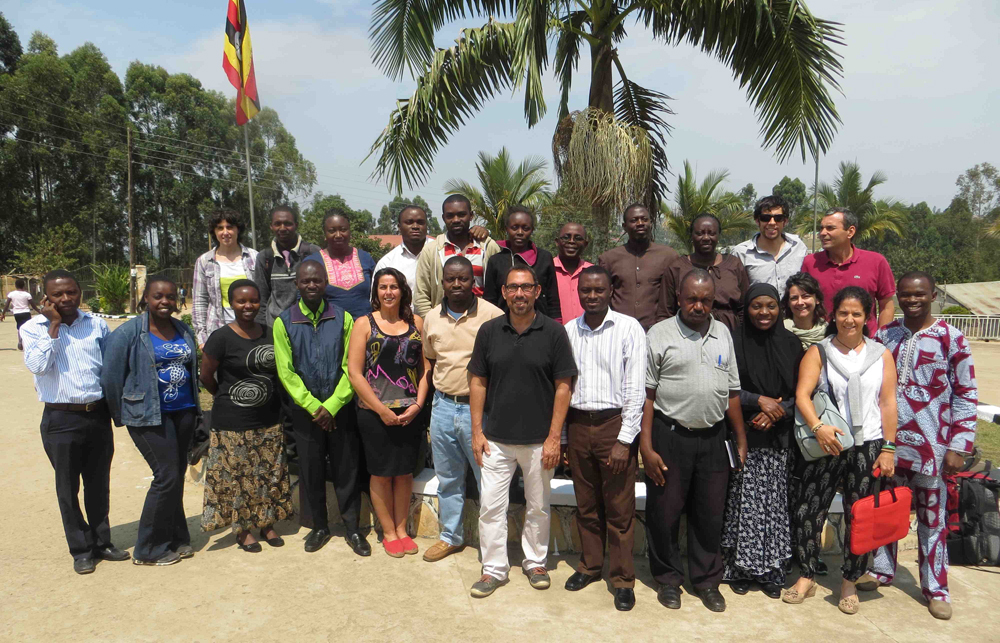Supporting African science: the role of fruit flies Inspire article
Not only is the fruit fly a valuable model organism, but it is also helping to put Africa on the scientific world map.
Isabel Palacios studies fruit flies. Not because she has any particular interest in flies themselves, but because they help her to answer fundamental questions about animal development.

founders of the DrosAfrica
project
Isabel Palacios
Most animals start life as a single, roughly spherical cell. Somehow the symmetry of that cell is lost and the animal ends up with a distinct head and tail. The curious thing is that even in that first cell – even before it’s fertilised – microscopic cellular machinery is working to create subtle asymmetries that prepare the cell for development. Isabel, a researcher at the University of Cambridge, UK, wants to understand how this happens.
But that’s not the only ambition she has for her flies. As a founder of the DrosAfrica project, she believes the fruit fly, Drosophila, can play an important role in developing the research infrastructure of an entire continent, helping African scientists undertake high-impact projects and form collaborations around the world. The aim of the project is to teach scientists how to use the fly as a model system for studying human disease, ultimately creating an interconnected community of Drosophila researchers in Africa. This involves organising local workshops to train scientists and providing basic equipment such as microscopes and antibodies.
A model for research
“People who don’t know about the fly ask: ‘How could it help with African research?’” says Isabel. “But actually there are a lot of questions you can answer.” Drosophila has long been used in genetic studies and allows researchers to gain insight into many types of human disease, including cancer, diabetes and neurodegenerative disorders such as Alzheimer’s or Parkinson’s. Flies can also be used in the study of host-pathogen interactions, including infection by viruses or Plasmodium – the organism that causes malaria. They have a broad range of uses in basic biomedical research.
The other thing about fruit flies – as some of us have had the misfortune to discover outside the laboratory – is that they reproduce rapidly, without human assistance. This means you can produce adequate numbers at low cost. Also, very little specialist equipment is required to look after them. There are many companies and university departments offering gene-editing services for Drosophila, so it’s easy, fast and inexpensive to obtain flies with the genes you want to study. Isabel points out that the community is very open and willing to share, so if there’s a particular type of fly that you’d like to research, there will often be someone in another part of the world who can send it to you, and the cost of shipping is very low. All these things make Drosophila an ideal organism to work with on a limited budget.

Ariane Böhm / Grunwald Kadow lab
International science
Isabel compares the situation in Africa to that of Spain 40 years ago, when the country underwent a period of rapid development. It was then that Antonio García-Bellido, a developmental biologist, began training a few Drosophila researchers who went on to train others, creating a large community of fly researchers in Spain. Some of them went abroad to start their own research groups. “Suddenly you could do competitive science using the fly, because it’s very inexpensive and the techniques are very easy to learn,” says Isabel. “In terms of research, it helped put Spain in the international picture.”
It was against this backdrop that Isabel grew up. At the time, Madrid had the only university in Spain that offered any courses in molecular biology, so she enrolled instead in a general biology degree at the University of La Laguna in Tenerife. “But”, she says, “any time they touched on a more cell biological aspect, that was what really interested me.” After the first year, she decided to make the move to Madrid. “Financially, it was quite a stretch for my parents”, she explains. “But once I was there, I loved it. I knew that this was what I wanted to do.”
She went on to study for a PhD at the European Molecular Biology Laboratory (EMBL) in Heidelberg, Germany. “I applied thinking there’s no way they’ll invite me there, but they did, and then there’s no way they’ll offer me a place, but they did. I’d already started a PhD in Madrid, but my supervisor, Juan Ortín, said, ‘Take this chance, it’s a really good one’, so that’s where I went,” she says, laughing. “Suddenly I was at one of the best molecular biology institutes in Europe! I couldn’t believe my luck and I’ve been lucky ever since.”

Isabel Palacios
Building relationships
Isabel explains that the idea for DrosAfrica came from a chance meeting between one of her colleagues, Lucia Prieto Godino, and Sadiq Yusuf, a professor from Kampala International University (KIU) in Uganda. Godino and Yusuf decided to organise a workshop at KIU that would teach Yusuf and his students the skills needed to work with Drosophila. Isabel was invited to lead some of the sessions at the workshop. “It was clear that these scientists had a great desire for knowledge and wanted to do good research,” she says, “but they didn’t have the money or the facilities.” Isabel and her colleagues realised that Drosophila could help the researchers – and others in Africa – achieve their goals.
Since then, they’ve organised several workshops in Uganda and Kenya, and more are planned for Nigeria, South Africa and Egypt. Three years into the project, they’re seeing attendees from the workshops setting up fly laboratories at their own institutions. They’ve had master’s students successfully defend their theses on Drosophila, and there are PhD students who will soon be doing the same. A network of scientists from several African countries is also developing. They’ve started organising workshops, and Isabel hopes they’ll soon be running laboratories and applying for grants independently.

Isabel Palacios
Another idea Isabel is considering is the establishment of an institute for basic biomedical research in Uganda, so instead of arranging workshops in several countries, scientists could come to a central hub where they would develop the skills needed to work with inexpensive model systems like Drosophila. Over time, their research could expand to other model systems and a broader range of cell biology techniques. “But it has to be from the inside,” she says, “with scientists talking to their governments and trying to get that kind of research institute going. Maybe one day there could be an organisation of several African countries working together, similar to EMBL in Europe.”
When I ask Isabel about some of the difficulties she’s faced with the DrosAfrica project, she answers without hesitation. “The challenges are always time and funds. For most of us, this is not our main job and we also need to focus on the other aspects of being a scientist – publishing papers and getting grants”, she explains. “But with DrosAfrica, what you put in and what you get out are a lot more balanced than it usually is in science. I find it the most satisfying project I have.”
Resources
- To learn more about model organisms, including Drosophila, see:
- Torti F (2017) Life models. Science in School 39: 21-24.
- For examples of research using Drosophila as a model, see:
- Békési A, Vértessy BG (2011) Uracil in DNA: error or signal? Science in School 18: 27-31.
- EIROforum (2012) Bigger, faster, hotter. Science in School 24: 27-31.
Institutions
Review
This article links biology and the social aspects of research with the life history of a research project, creating a compelling story about international research. It could be used for a lesson on cell biology or model organisms, to highlight the applications of basic research to other subjects such as medicine and pharmacology. It also illustrates the importance of research in the developing world and the collaborative nature of science.
Marina Minoli, biology teacher, Italy





